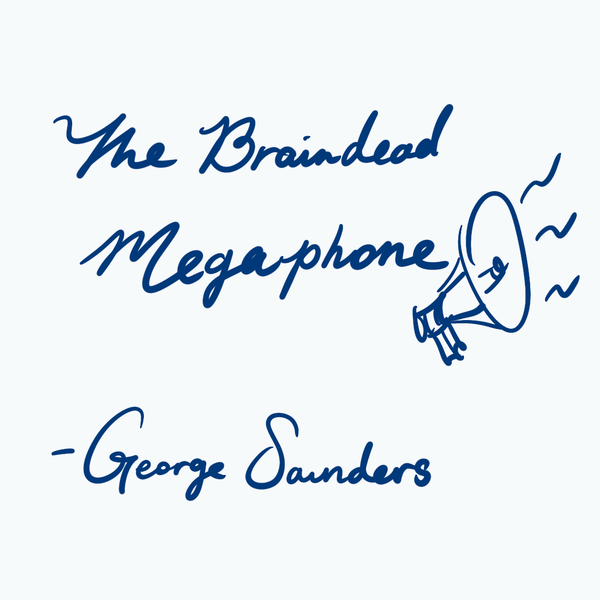Table of contents
In this first look at The Braindead Microphone (2007), a creative nonfiction essay by George Saunders, let's focus on the first section.
The first section is an establishing shot, introducing the key concepts that will expand and unfold throughout the piece. And in this establishing shot, the author does something startling.
By the end of this reflection, you'll be able to:
- Use a specific technique to read like a writer (and not just a reader)
- Develop your ideas by bringing them into conversation with a canon
- Get readers invested in your argument through a literary technique
The essay raises some interesting questions about the effects of mass media on US foreign policy and those who vote for it. But for the most part, we'll be turning our attention slightly beyond the ideas themselves to the ways in which the author communicates them.
As one reader comments, Saunders frames this essay in a way that makes it "more entertaining and readable," which engages readers and "makes you want to follow along with where he's going." And through that framing, she continues, "he positions himself as trustworthy, and as 'one of us.'"
How did he pull it off? Let's go!
The Establishing Shot
As you re-read the opening section, pay particular attention to the second-last paragraph. It's just one sentence long. But there's a lot going on there.
To understand why that line jumps out at me, I need to pass on a tip that I picked up in my undergrad. Or it's more like a method, really. It's a method for reading critically.
The tip was passed on to me by my thesis advisor, a clever guy who had studied American lit with some big shots in the academy, from whom he had apparently picked up the tip. So the tip has a solid pedigree, and anyway I can vouch for it because it's served me very well over the years.
He said, to read well, you just need to do two things:
